| VIEW THIS EMAIL IN YOUR BROWSER > |
|
|
 |
|
 |
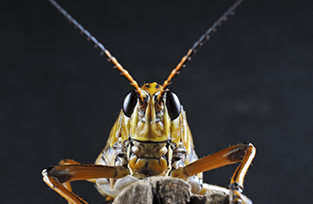 |
| Credit: Smithsonian Institution.
|
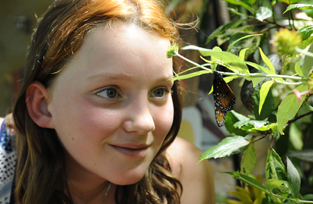 |
|
Credit: Rosa Pineda. |
|
| Live Butterfly Pavilion |
The Insect Zoo |
Come in from the cold and stroll among hundreds of living butterflies and exotic plants in the Butterfly Pavilion, a tropical oasis in Washington, DC!
2nd Floor.
More >
|
Observe live insects and their many-legged relatives, touch and hold them, and watch tarantula feeding demonstrations in the Insect Zoo.
2nd Floor.
More >
|
| MORE EXHIBITS > |
 |
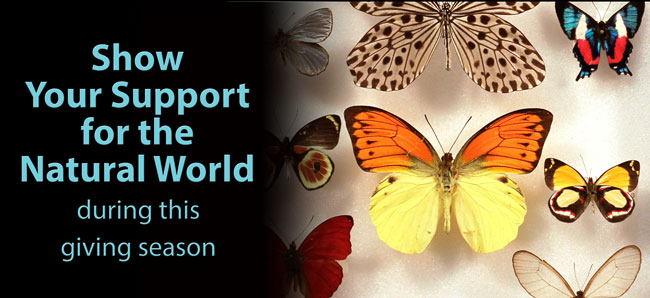
Credit: Smithsonian Institution. |
Support the Museum
|
Volunteer Opportunities |
The Museum depends on you to continue its mission of understanding the natural world and our place in it. While federal funds support the building, most of the educational programs, research, exhibitions, and events at the Museum rely on your generosity. Join others and be part of an enduring impact.
Make a gift before year's end today >
|
Share your interest in insects, passion for plants, or fascination with fossils! A variety of opportunities are available at the Museum, either working with the public or behind-the-scenes.
Learn about volunteer opportunities >
|
| MORE WAYS TO GET INVOLVED > |
 |

Credit: Piotr Nasrecki.
|
| Smithsonian Science How: Ants |
Upcoming Educational Programs |
Live Webcasts: Dec. 10, 11 a.m. & 2 p.m. EST
Learn about the creatures responsible for processing more vegetation than any animal on earth, the leaf-cutter ants. Take a journey with Smithsonian entomologist Ted Schultz and witness the ant's remarkable farming abilities.
Watch a video preview and register >
|
December 9, 11 a.m.-1 p.m.
Expert Is In: Diving for Algae!
December 11, 2-4 p.m.
Expert Is In: Explore Aquatic Invertebrates
December 18, 4-5 p.m.
Climate Dynamics and Human Evolution
Visit our calendar on the Q?rius website >
|
| MORE EDUCATIONAL PROGRAMS > |
 |
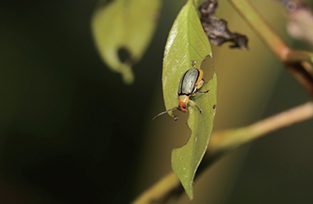 |
| Credit: Smithsonian Institution.
|
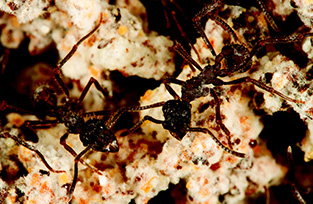 |
|
Credit: The American Naturalist. |
|
| New Paper on Fungus-Farming Ants |
A New Species: The Flea Beetle! |
A team of researchers, including the Smithsonian's Ted Schultz, Jeffrey Sosa-Calvo and Sean Brady, have discovered a population of fungus-farming ants in Brazil that may provide important clues about biological mechanisms in ant agriculture.
Read the paper >
|
Alexander Konstantinov, a USDA beetle expert who works in the National Museum of Natural History's Systematics Entomology Lab, co-authored a recent article describing and naming a tiny flea beetle, Burumoseria yuae. The remarkable beetle subsists on a Taiwanese shrub that is toxic to all other animals.
Read more > |
| MORE RESEARCH > |
 |
 |
| Credit: Smithsonian Institution.
|
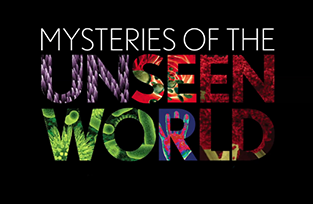 |
|
Credit: National Geographic Entertainment. |
|
| Now Showing @ the Johnson IMAX Theater |
In the Store: Smithsonian Bead Program |
Watch the action unfold in 3D on our 6-story screen — the largest in Washington, DC!
- Mysteries of the Unseen World 3D
- Dinosaurs Alive 3D
- Jean-Michel Cousteau's Secret Ocean 3D
Get your tickets >
|
Beads are one of humankind's earliest expressions of symbolic thinking.
Explore your creativity and the cultural history of bead-making with the bead selection and kits for sale in our Gallery Store.
Natural History Museum Stores >
|
| Climate Change Game Showcase |
Climate Change Game Night |
Monday, January 18, 1-4 p.m.
Join us for an afternoon of family fun. Explore Arctic ice-melt, conserve marine ecosystems, and plan strategies to reduce global warming by playing games developed during the October Climate Game Jam.
Learn more >
|
Friday, January 21, 6:30-8:30 p.m.
Winning may not be everything, but it can help save the planet. Bring your competitive spirit to the museum for an evening of climate change games. Play newly developed games, talk with game designers, and give feedback during this open-house event. It's serious fun.
RSVP for this event >
|
| MORE EVENTS > |
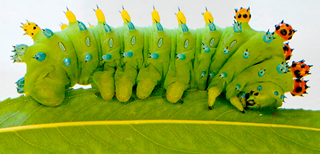 |
BANNER IMAGE:
Cecropia Moth (Hyalophora cecropia) caterpillar. North America's largest native moth, the Cecropia Moth is a member of the Saturniidae family, or giant silk moths. Nicknamed "The Christmas Tree Caterpillar" for its vivid colors, the caterpillar measures about 4 inches, and will become a moth of up to 6 inches in wingspan. Image Credit: Rosa Pineda, Smithsonian Institution.
|
|
|
| © 2015 Smithsonian's National Museum of Natural History | 10th St. and Constitution Ave., NW | Washington, DC 20013 |
CHANGE EMAIL PREFERENCES > |
|


